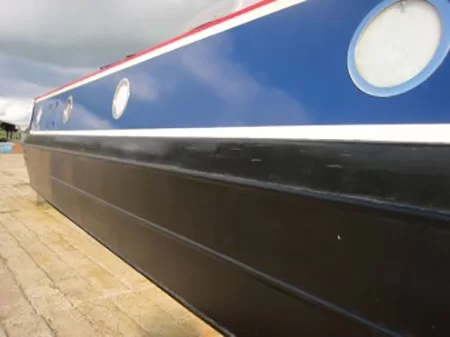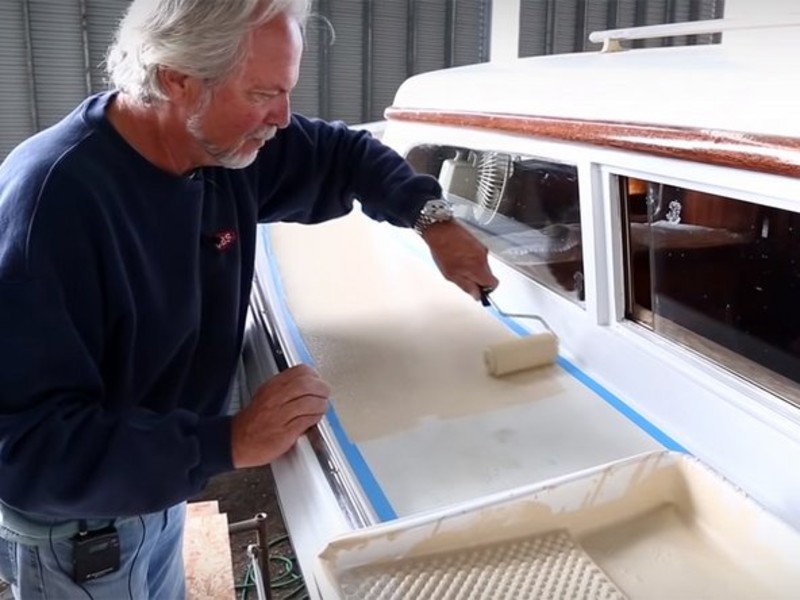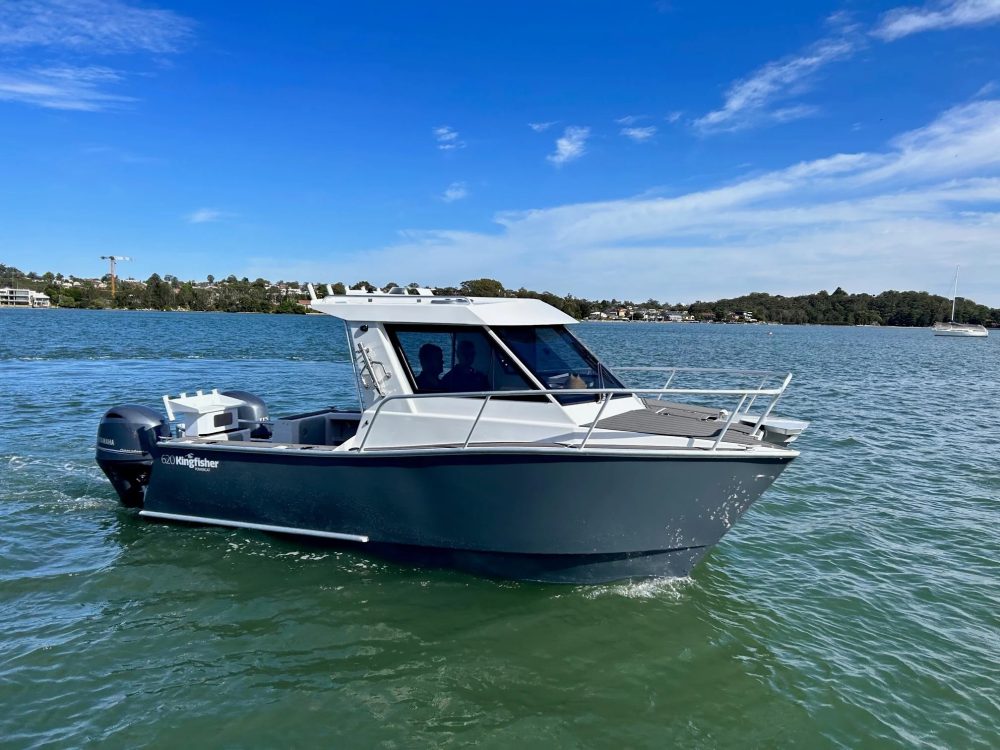All Blogs
Understanding the Essential Marine Coatings: Anti-Fouling, Bilge, Hull Blacking, and Anti-Slip Deck Paint
Owning a boat or any marine vessel comes with a significant responsibility: ensuring it is well-maintained to withstand the harsh conditions of the sea. A critical part of this maintenance is the application of specialized coatings, which serve as a protective layer for various parts of the vessel. Among the most important coatings are Teamac Antifouling, Bilge Paint, Hull Blacking, andAnti-Slip Deck Paint. Each of these coatings plays a crucial role in preserving the boat’s integrity and longevity. Let’s explore what each of these coatings is, why they’re important, and how they contribute to the upkeep of your boat.
Anti-Fouling Paint: Protecting the Hull from Marine Growth
Anti-fouling paint is perhaps one of the most vital coatings a boat needs, especially for vessels that are left in the water for long periods. This specialized paint is applied to the bottom of the hull to prevent the growth of marine organisms such as algae, barnacles, and mussels, which can attach to the surface of the boat. If left unchecked, these organisms can severely affect the boat’s performance by increasing drag, reducing speed, and causing fuel inefficiency.
Marine life that attaches itself to the hull can also contribute to corrosion, damage the boat’s structure, and even lower its resale value. Anti-fouling paint helps to eliminate or reduce these problems by creating a surface that is difficult for organisms to adhere to. Some anti-fouling paints even contain biocides that release toxins, making the environment uninhabitable for marine life.
Anti-fouling Paints Available:
Teamac Metaclor Antifouling Primer:
Teamac Metaclor Antifouling Primer is a chlorinated rubber based coating that can be used as an underwater primer alongside Teamac Antifouling A Plus or Teamac Antifouling D Plus.
Teamac Protector II Antifouling:
Teamac Protector II Antifouling is a cuprous oxide based antifouling coating designed for use on the underwater areas of vessels and underwater structures. The coating is designed for vessels with a maximum speed of 25 to 30 knots. It has an expected functional life of 12 to 18 months.
Teamac Antifouling A Plus:
Teamac Antifouling A Plus is an antifouling containing a high level of copper thiocyanate designed for use on underwater structures and underwater surfaces of marine vessels including aluminium hulls with a maximum speed between 25 and 30 knots. The coating has a functional life of 18 to 24 months.
Teamac Antifouling D Plus:
Teamac Antifouling D Plus is an antifouling designed for use on underwater structures and underwater surfaces of marine vessels with a maximum speed between 25 and 30 knots. The coating has a functional life of 18 to 24 months. For aluminium vessels, use Teamac Antifouling A Plus instead.
When choosing anti-fouling paint, it is important to consider factors such as the boat’s usage, the type of water it will be exposed to (saltwater or freshwater), and local environmental regulations regarding biocides.

Bilge Paint: Ensuring Clean and Safe Storage Areas
The bilge of a boat refers to the lowest point inside the hull where water, oil, and debris tend to accumulate. Keeping the bilge area clean and well-maintained is critical for the proper functioning of the vessel, as standing water or contamination can lead to corrosion, electrical failures, or unpleasant odors.
Bilge paint is specifically designed to coat the bilge area to prevent corrosion, mildew growth, and the build-up of grime. The paint is typically oil-resistant and water-resistant, making it easier to clean and maintain. Applying bilge paint also helps to reduce the risks of bacteria and mold, which can thrive in damp, dark environments.
Benefits to Bilge Paint:
Corrosion Resistance:
Bilge areas are prone to water exposure, which can lead to corrosion of metal components. Bilge paint provides an extra layer of protection against rust and corrosion.
Easier Cleaning:
Bilge paint typically has a smooth, non-porous finish that makes it easier to clean away oil, dirt, and other debris that accumulate in the bilge.
Preventing Mould and Mildew:
The bilge is an area that remains damp for long periods, creating an ideal environment for mould and mildew. Bilge paint helps prevent this growth and keeps the area sanitary.
It is crucial to choose a bilge paint that is designed for the specific conditions of your boat’s bilge area. Consider whether your bilge is prone to oil or just water accumulation, as some paints are better equipped for these different needs.
Hull Blacking: Preserving the Underwater Parts of the Boat
Hull Blacking is a special type of paint used to protect the underwater sections of a boat from corrosion, fouling, and damage caused by environmental factors. This paint is often used for vessels that operate in freshwater, such as narrowboats, barges, and canal boats, which are susceptible to rust due to prolonged exposure to water.
Hull Blacking works by creating a protective, waterproof layer that prevents moisture from reaching the metal components of the hull. It also protects against chemical corrosion caused by the water’s acidity and mineral content. Some hull blacking formulations also have anti-fouling properties, which help keep marine growth at bay.
Key Characteristics of Hull Blacking
Corrosion Resistance:
Hull blacking is designed to provide a protective layer that prevents water and moisture from coming into contact with the metal surface of the hull. This helps to prevent rust and corrosion, which can occur over time when metal is exposed to water, especially in freshwater environments like canals and rivers.
Waterproofing:
One of the primary functions of hull blacking is to create a waterproof barrier that keeps water from seeping into the hull. By coating the submerged portion of the boat’s hull, hull blacking helps protect the structure from water damage, ensuring the boat remains in good condition over time.
UV Protection:
Hull blacking typically includes some level of UV protection to guard against the harmful effects of sunlight. UV rays can break down the material of the hull over time, so hull blacking helps to protect the boat’s metal components from UV-induced degradation.
Cost-Effectiveness:
Compared to other boat maintenance treatments, hull blacking is generally a cost-effective option for preserving the hull’s integrity. Regular application of hull blacking can extend the life of the boat and delay the need for more expensive repairs or replacements due to corrosion or water damage.
Anti-Slip Deck Paint: Enhancing Durability and Safety
The deck of a boat is a high-traffic area, subject to wear and tear from foot traffic, UV rays, saltwater, and other harsh conditions. Anti-Slip Deck Paint is specifically formulated to protect the surface of the deck and ensure the safety of anyone walking on it. A well-applied deck paint not only improves the boat’s appearance but also enhances its functionality.
Deck paint serves several purposes:
Slip Resistance:
Deck paints often contain textured particles or a non-slip finish, providing a safe surface to walk on, especially when the deck is wet.
UV Protection:
Deck paints protect the boat from the damaging effects of UV rays, which can cause fading, cracking, and deterioration of the deck material over time.
Corrosion and Stain Resistance:
Deck paint is also resistant to saltwater and oil stains, preventing deterioration of the deck material and ensuring it remains in good condition.
Aesthetic Appeal:
Deck paints come in a wide range of colors, allowing boat owners to customize their vessel’s appearance and maintain its visual appeal over time.

Conclusion
Maintaining a boat’s exterior through the application of anti-fouling, bilge, hull blacking, and deck paint is crucial for preserving its performance, safety, and longevity. Each type of paint serves a unique purpose, from preventing marine growth and corrosion to enhancing slip resistance and aesthetic appeal. When selecting these coatings, it’s important to consider the specific needs of your vessel, the type of water it operates in, and the environmental impact of the products you use.
Regularly updating these coatings not only ensures that your boat remains in optimal condition but also helps protect your investment for years to come. Whether you’re cruising on saltwater or freshwater, investing in the right paints will enhance your boating experience and help keep your vessel safe, functional, and beautiful.
[/ux_text]FAQs
What is anti-fouling paint, and why is it important?
Anti-fouling paint is a special type of coating applied to the bottom of a boat’s hull to prevent the growth of marine organisms like algae, barnacles, and mollusks. These organisms can attach themselves to the hull and create drag, which reduces the boat’s speed, fuel efficiency, and overall performance. Anti-fouling paint either contains biocides that deter marine growth or uses a self-polishing mechanism to maintain a smooth surface that prevents organisms from attaching.
What is bilge paint, and where should I apply it?
Bilge paint is specifically designed for the bilge area of your boat, which is the lowest part of the hull where water, oil, and other fluids tend to collect. It helps prevent corrosion and mildew, which are common problems in this damp, confined space. Bilge paint creates a tough, water-resistant layer that is easy to clean, making it essential for maintaining the cleanliness and longevity of your boat.
Can hull blacking be used in saltwater?
Hull blacking is generally more suited to freshwater use, especially for boats like narrowboats, barges, and canal boats. In saltwater environments, hull blacking may not offer enough protection against corrosion, and it may wear off more quickly. For saltwater vessels, an anti-fouling paint with additional corrosion protection is usually recommended.
How do I apply deck paint?
To apply deck paint, start by thoroughly cleaning the surface to remove dirt, grease, and any old paint. Sand the area to create a smooth surface and allow the paint to adhere properly. Apply the paint in thin layers, allowing each coat to dry completely before applying the next. You may need multiple coats depending on the type of paint and the desired finish. Always follow the manufacturer’s instructions for best results./p>
Is it safe to apply these paints myself, or should I hire a professional?
While many boat owners apply these paints themselves, it requires some preparation, time, and attention to detail. If you’re comfortable working with these materials and following the product instructions carefully, you can certainly do it yourself. However, if you are unsure or would like a flawless finish, it may be worth hiring a professional who has experience applying these coatings.
Contacting us is easy!
Email: [email protected]
Call Us: 01942 884 122
Contact form: https://www.palatinepaints.co.uk/contact-us
Live Chat Service: Press the small blue icon at the bottom left of your screen.


